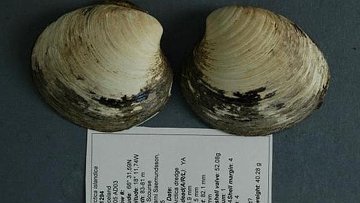
© Photo: Paul Gonzalez, Hopkins Marine Station
MOSCOW, December 9 - RIA Novosti . Oceanographers have discovered in the Pacific Ocean an unusual worm is the larva has a head and at the same time her body is completely absent, says in an article published in the journal Current Biology.
"If you look at the larvae, you get the impression that you are looking at the adult worm, which has decided to postpone the body growing on then inflated his head, turned to" ball ", and began to swim in the ocean, collecting plankton. Such a delay in development, is probably very important for larvae, as it helps her to swim in the water column, "- says Paul Gonzalez (Paul Gonzalez) from Stanford University (USA).
It tells Gonzalez, he made this discovery almost by accident, growing the larvae of different species of marine animals to assess how many of them are experiencing metamorphosis - the process of transformation of the larvae in a very unlike her an adult, whose body structure, lifestyle and even habitat will completely different.
According to oceanographer, scientists have long suspected that the marine animals, unlike their terrestrial counterparts, almost always develops in a similar way, and they are interested in why and how they acquired this ability. The search for answers to this question, as noted by Gonzalez, hampered by the fact that the cultivation of the larvae of these animals-the "Transformers" and the search for their relatives who look the same and in adult life, and during growth, is very time-consuming and difficult task.
© Photo: Paul Gonzalez and Chris Patton, Hopkins Marine Station
Development Stage Schizocardium californicum
Trying to find these sea creatures, Gonzalez and his colleagues came across a very unusual worm, Schizocardium californicum, inhabiting the waters of the Pacific Ocean, near the coast of California.
These worms, as they say, scientists, live as adults in the sand on the sea bottom, feeding on the remains of other animals, falling to the bottom of the ocean. Their free-floating larvae as found Gonzalez, are whimsical structure similar in shape to the head of the adult Schizocardium californicum, separated from the rest of the body. A similar body shape and swimming ability helps them to "float" within the surface of the sea and feed on plankton.
This is a very simple reason - the genes that are responsible for the growth of the body, were simply turned off during the larval stage Schizocardium californicum. When the larva reaches the desired size, or gaining the required amount of nutrients, it goes through a metamorphosis and turns into an adult by growing a tail.
How genes include growth after metamorphosis, scientists do not yet know. They plan to find an answer to this question by observing the growth of Schizocardium californicum and comparing the pattern of gene activity in the cells of his order, which sections of DNA are active during the growth of their closest relatives, hemichordates worms (Hemichordata), growing a "normal" way.




No comments:
Post a Comment